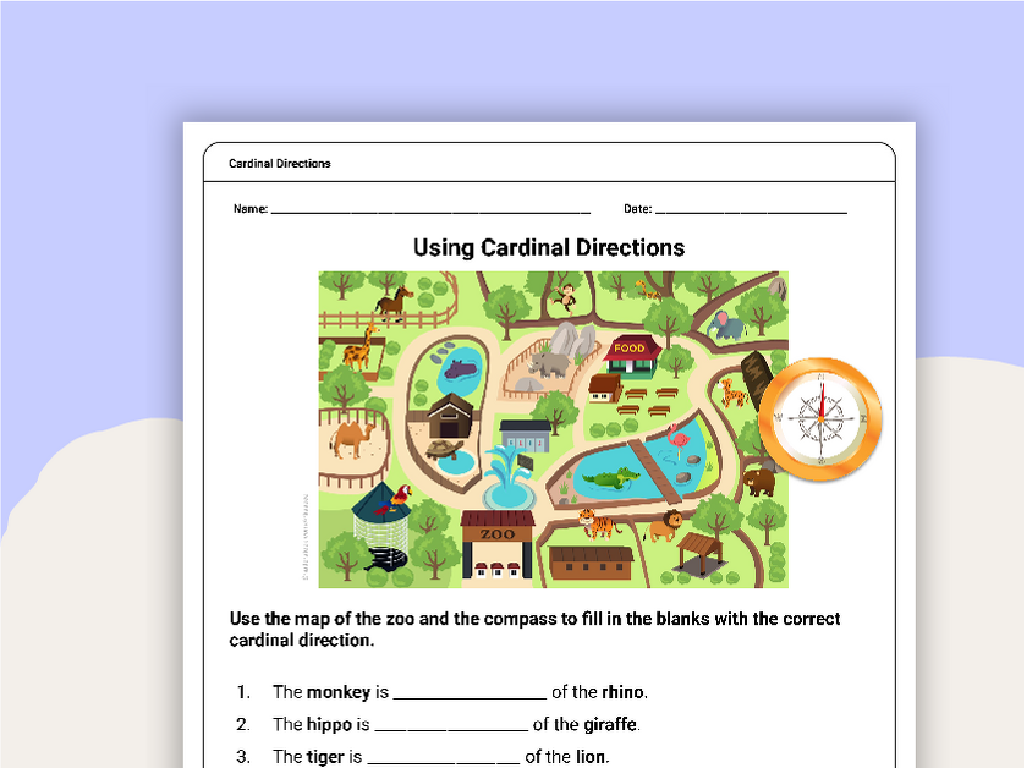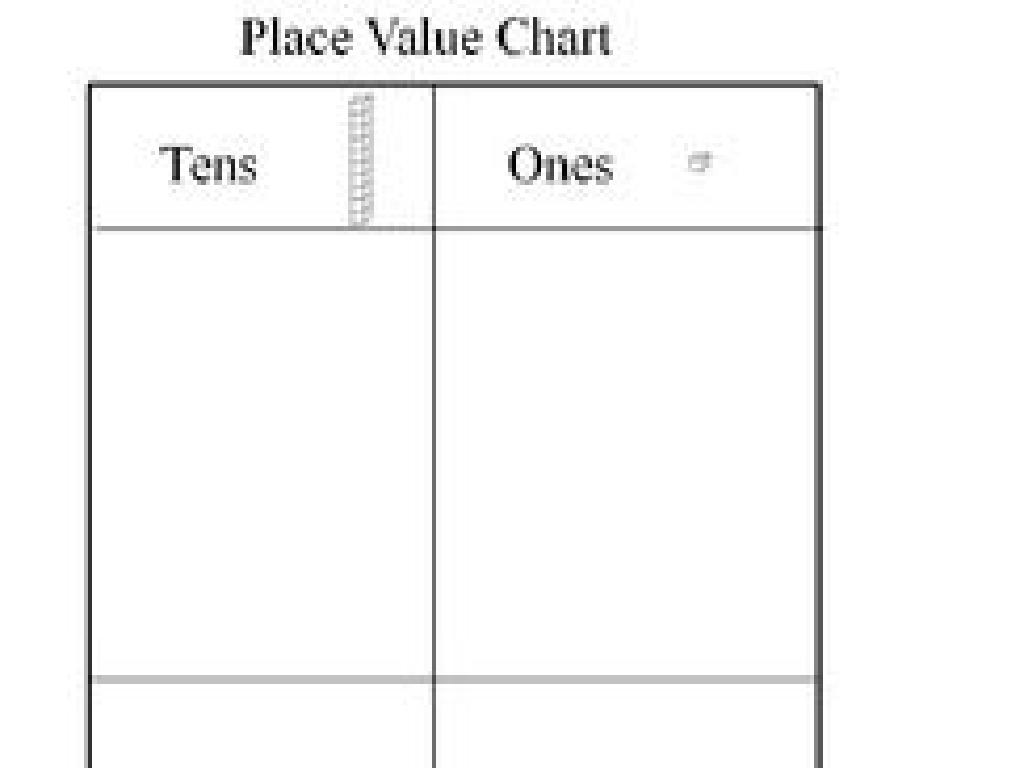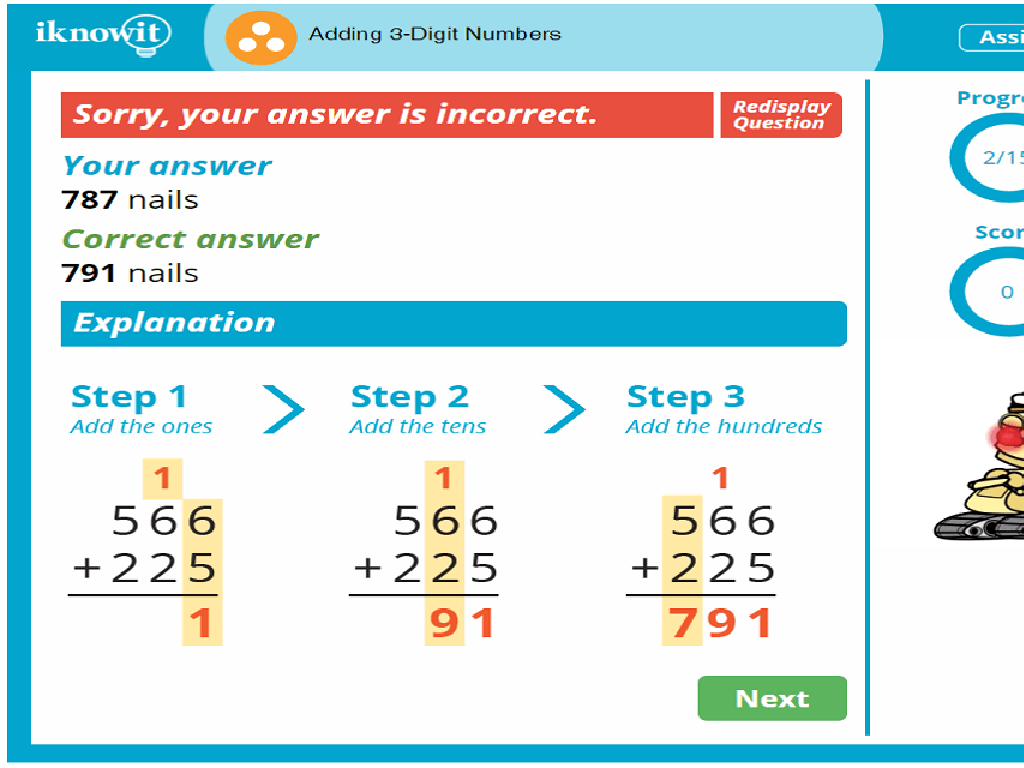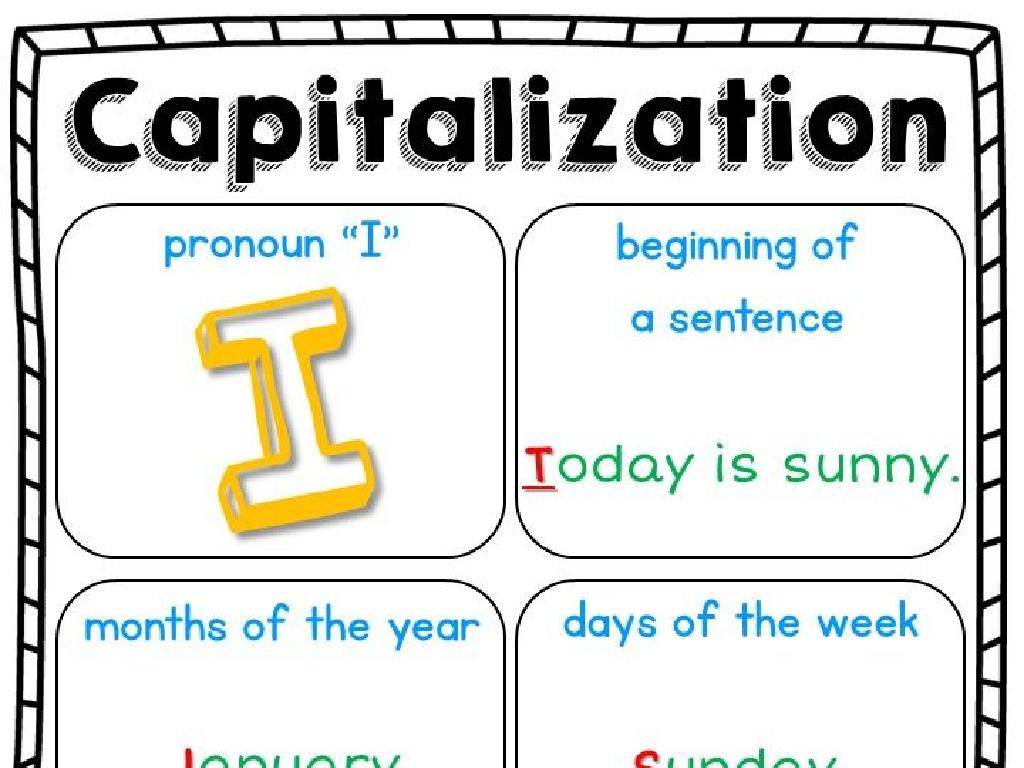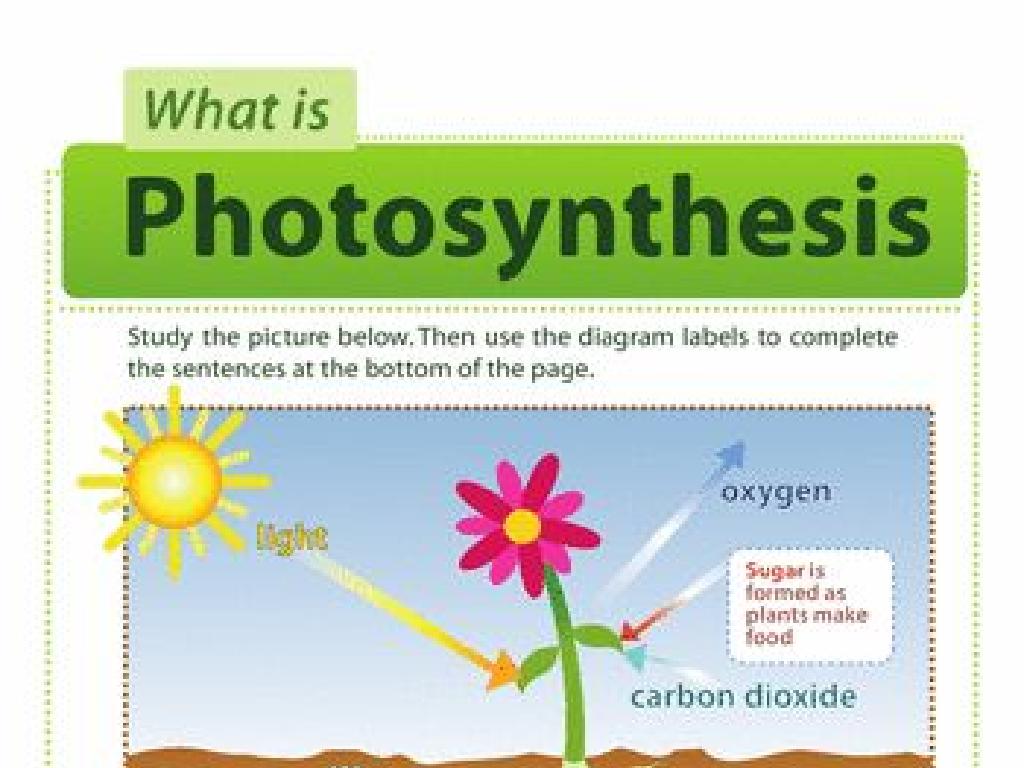Convert Mixed Time Units
Subject: Math
Grade: Fourth grade
Topic: Time
Please LOG IN to download the presentation. Access is available to registered users only.
View More Content
Introduction to Time: Understanding Units
– Learn different time units
– Time is measured in seconds, minutes, hours, days, etc.
– Discover why time matters
– Time helps us organize our day, from school to bedtime.
– Review: seconds, minutes, hours
– 60 seconds = 1 minute, 60 minutes = 1 hour
– Practice converting time units
– How many minutes are in 2 hours? Or seconds in 5 minutes?
|
This slide introduces students to the concept of time and its various units, emphasizing its relevance in everyday life. Begin by explaining the basic units of time and how they relate to each other. Highlight the importance of time in structuring daily activities such as school, play, and rest. Review the relationships between seconds, minutes, and hours, ensuring students understand the conversion between these units. Engage the class with simple conversion questions to solidify their understanding. This foundational knowledge sets the stage for more complex time calculations in future lessons.
Understanding Mixed Time Units
– What are mixed time units?
– Mixed units combine hours, minutes, seconds, etc.
– Daily life examples
– Cooking times, road trips, and schedules
– Why conversion matters
– Accurate time-telling, scheduling, and timeliness
– Practice conversion skills
|
This slide introduces the concept of mixed time units, which are combinations of different time measurements such as hours, minutes, and seconds. Provide relatable examples like cooking times (e.g., 1 hour 30 minutes), road trips (e.g., 2 hours 45 minutes), or daily schedules to illustrate the concept. Emphasize the importance of converting mixed time units for accurate time-telling, efficient scheduling, and maintaining timeliness in various aspects of life. Encourage students to practice their conversion skills with real-life scenarios to reinforce their understanding.
Converting Hours to Minutes
– Understanding time units
– 1 hour is equal to 60 minutes
– Multiplying to convert hours to minutes
– Use multiplication for conversion: hours x 60 = minutes
– Example: 3 hours to minutes
– 3 hours x 60 minutes/hour = 180 minutes
– Practice with different numbers
|
This slide is aimed at teaching fourth graders how to convert hours into minutes. Start by explaining that time can be measured in different units, such as hours and minutes, and that there are 60 minutes in one hour. Emphasize the use of multiplication as a tool for conversion, where the number of hours is multiplied by 60 to find the equivalent number of minutes. Provide an example by converting 3 hours into minutes, which equals 180 minutes. Encourage students to practice this method by converting different numbers of hours into minutes, reinforcing their multiplication skills and understanding of time conversion.
Converting Minutes to Seconds
– Seconds in a minute
– 1 minute equals 60 seconds.
– Multiply to convert
– Use multiplication for quick conversion.
– Example: 5 minutes
– 5 minutes is 5 times 60, which equals 300 seconds.
– Practice conversion
|
This slide is aimed at teaching students the basic concept of time conversion, specifically converting minutes to seconds. Start by explaining that there are 60 seconds in one minute. Then, show them how to use multiplication to convert minutes into seconds by multiplying the number of minutes by 60. For example, to convert 5 minutes into seconds, you multiply 5 by 60 to get 300 seconds. Encourage the students to practice this conversion with different numbers of minutes to reinforce the concept. Provide additional examples and have them work through these conversions in pairs or groups for better understanding.
Mixing It Up: Hours, Minutes, and Seconds
– Converting hours to seconds
– Multiply hours by 3600 to get seconds
– Steps for time conversion
– Follow conversion: hours to minutes, then minutes to seconds
– Class example: 2h 30m to seconds
– 2 hours = 7200 seconds, 30 minutes = 1800 seconds, total = 9000 seconds
|
This slide introduces students to the concept of converting mixed time units, specifically from hours and minutes to seconds. Start by explaining that there are 3600 seconds in an hour. To convert time, first change hours to minutes, then minutes to seconds, and add them up. Use the class example to walk through the process step-by-step: Convert the hours (2) into seconds (2 hours x 3600 seconds/hour = 7200 seconds), then convert the minutes (30) into seconds (30 minutes x 60 seconds/minute = 1800 seconds), and finally, add the two to get the total seconds (7200 + 1800 = 9000 seconds). Encourage students to practice with different times to solidify their understanding.
Practice Time: Converting Mixed Time Units
– Let’s practice time unit conversion
– Work on problems with a partner
– Find a buddy and solve the problems together
– Share your solutions with the class
– Discuss how you got your answers
– Understand conversion concepts better
|
This slide is designed to engage students in a collaborative learning activity focused on converting mixed time units. Students should be paired up to work through a set of practice problems that require them to convert between hours and minutes, minutes and seconds, etc. After completing the problems, pairs will share their solutions and the strategies they used to arrive at their answers with the rest of the class. This activity not only reinforces the mathematical concept but also promotes communication and teamwork. As a teacher, circulate the room to offer guidance and ensure understanding. Prepare a diverse set of problems to cater to different skill levels within the class. Encourage students to explain their reasoning during the sharing session to deepen their comprehension.
Class Activity: Time Conversion Relay
– Split class into relay teams
– Each member solves a conversion step
– One may convert minutes to hours, another hours to days
– Work together to finish first
– Winning team gets a prize!
|
This activity is designed to encourage teamwork and understanding of time conversion. Divide the class into small groups, each group representing a relay team. Provide each team with a series of mixed time units that they need to convert. Each member of the team will be responsible for one step in the conversion process, for example, converting minutes to hours or hours to days. The first team to complete all conversions accurately wins the relay. This will help students practice their conversion skills and learn to work collaboratively. Possible conversions could include: 120 minutes to hours, 3 days to hours, 48 hours to days, etc. Ensure that each team has a mix of easier and more challenging conversions to keep the activity fair.
Time Conversion Mastery & Homework
– Recap: Converting Mixed Time Units
– Practice is key to mastery
– Regular practice solidifies learning
– Homework: Time Unit Conversion
– Convert hours to minutes, minutes to seconds, etc.
– Share your answers next class
|
As we conclude today’s lesson, remind students of the key steps in converting mixed time units, such as hours to minutes and minutes to seconds. Emphasize the importance of regular practice to become proficient in time conversion. For homework, assign specific mixed time unit conversion problems, ensuring a range of difficulties to cater to all students. Encourage them to show their work for each step. In the next class, allocate time for students to share their answers and discuss any challenges they faced. This will reinforce their understanding and provide an opportunity for peer learning.

